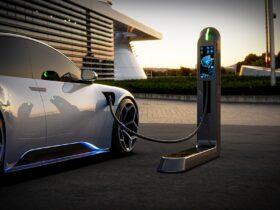Last-mile delivery presents a challenge for companies across all types of industries. But now, more and more industry players are turning to autonomous solutions — in the form of driverless delivery vehicles.
Filling gaps in the supply chain, these autonomous vehicles (AVs) are being used to deliver products for grocers, retailers, and various other businesses.
Autonomous Vehicles and Last-Mile Delivery
If you think e-commerce shook up the supply chain, you’re in for a shock, according to KPMG’s automotive sector leader Gary Silberg. “E-commerce,” he said, “has been a tremor, but autonomous delivery vehicles now represent an earthquake of a magnitude not seen before.”
Using natural language processing, artificial intelligence (AI), and cloud computer networking, so-called “islands of autonomy” in metropolitan markets will fundamentally change local order fulfillment.
KPMG further predicts:
- Delivery vehicle miles traveled (VMT) could reach 78 billion VMT per year by 2040 as companies strive to meet customer demand for same-day, or even same-hour, delivery
- New service and business development for building, routing, cleaning, charging, and maintaining the new AVs
- Introduction of loading and unloading zones, as well as spaces for delivery lockboxes to accommodate driverless delivery vehicles
“Shopping and last-mile logistics will never be the same.” — KPMG
Whether customers will embrace the driverless delivery vehicle remains to be seen; several recent news stories have reported on incidents of individuals attacking driverless cars, and in a Brookings study from July 2018, only 21% of adult internet users said they would be willing to ride in such a vehicle. Yet the business benefits of this trend are clear.
Driverless Delivery Vehicle Testing
Today’s customers have high expectations for delivery fulfillment. And through the use of autonomous vehicles, deliveries are expected to become both faster and cheaper.
Ford is already testing autonomous vehicle delivery on the streets of Miami and anticipates the deployment of tens of thousands of self-driving vehicles in multiple cities beginning in 2021. Why? “The opportunity of that market is massive,” said Sherif Marakby, president of Ford Autonomous Vehicles. “It’s a margin that is like no automotive markets today.”
Ford has also partnered with Walmart and logistics company Postmates to design self-driving vehicles that will deliver goods ordered from the retail giant’s stores to customers’ doorsteps. Ford has said it plans to invest a total of $4 billion in AV technology through 2023.
Toyota, General Motors (GM), Google, and Apple are also investing in autonomous vehicles. Toyota, for example, revealed the e-Palette at the 2018 Consumer Electronics Show; the company hopes that this autonomous vehicle will be delivering pizzas as early as 2020 — potentially with a chef in tow cooking up the pizzas to order. Toyota says it will work with Amazon, Didi Chuxing, Mazda, Pizza Hut, and Uber to make this a reality.
Kroger, meanwhile, went with an AV startup to try out driverless delivery on the streets of Scottsdale, Arizona. The grocer is trusting Nuro to handle last-mile delivery in this densely populated region, with product loaded in temperature-controlled compartments.
In China, e-commerce behemoth Alibaba already uses driverless robots to deliver goods to a secure e-locker. The robot, called the G Plus, can run up to 9 miles an hour.
And in Silicon Valley, a leading Seoul-based AV startup, ThorDrive, launched its self-driving delivery service for the Ace Hardware retailers’ cooperative, starting with Hassett Ace Hardware in Palo Alto, California.
Driving Into an Autonomous Future
KPMG predicts that autonomous delivery vehicles will:
- Dramatically change the consumer e-commerce experience
- Drive consumer demand for faster, easier deliveries
- Create a totally new product-delivery ecosystem
McKinsey expects autonomous ground vehicles to be used most often in the last-mile delivery market in urban areas for regular, high-reliability, or same-day delivery, while drones and droids will be more likely to handle rural areas and faster fulfillment requirements.















